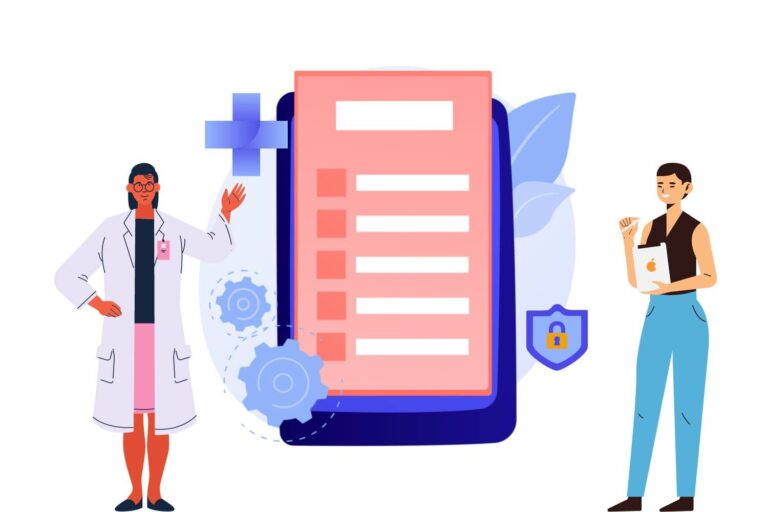Addressing Bottlenecks in Patient Payments: 7 Must-haves in a Digital Payment Solution
Picture this.
A patient comes in for an appointment. Both the patient and the staff are unclear about the patient’s insurance eligibility. The staff manually verifies the insurance either via phone call or through clearing houses. The patient pays the visit charges and leaves. After a few days, the patient receives a ‘surprise bill’, and due to the lack of financial transparency, they are unable to bear the cost. The staff struggles with awkward financial conversations and fails to receive the amount with ineffective reminders, spending both time and money.
Does this scenario seem familiar to your practice?
Research has shown that 53% of patients needed clarity regarding their payment dues, and nearly 80% of them expect their doctors to clarify financial information.
From addressing financial transparency to alleviating staff burden, a digital patient payment solution can help practices tackle common challenges and increase collections.
So, what are the key pain points and what tools can you adopt to address them? Let’s find out.
Must-Have Features in a Digital Patient Payment Solution
1. Financial Transparency:
Challenge: Confusion over patient billing is real. The Navicure Survey states that 53 percent of patients needed clarity regarding their payment dues, and 67 percent were unsure if the bills were covered by insurance or an out-of-pocket expense.
The Solution: A digital payment interface should provide transparency that clearly explains out-of-pocket expenses and insurance adjustments. This will give patients a clear picture of what they owe and why, reducing disputes and payment delays. Similarly, the digital payment solution should give your staff a comprehensive glance at patient copays, outstanding balances, and deductibles, making it easier to collect payments upfront and avoiding follow-ups and revenue loss.
2. Multi-channel Payment Options:
Challenge: Did you know that 61% of patients would consider switching providers for a better payment experience? Today’s consumers prefer different digital payment modes that help them pay conveniently from anywhere, at any time.
The Solutions: Offer hassle-free payment options where patients can pay before, during, and after the check-in process using different channels. For instance, they can pay using their personal device while pre-registering. Or patients can come to the practice and pay using a kiosk, POS, or QR code. Allow the front office to accept cash, card, or check payments and collect past dues online. As for outstanding balance, provide patients the option to pay online using the practice website.
3. Automated Payment Receipt:
Challenge: The manual process of emailing or mailing payment receipts costs time and money. At times, it isn’t executed effectively. And when patients don’t receive a payment receipt or receive it late, it causes confusion, higher bad debts, and payment disputes.
The Solution: A digital payment solution can streamline the entire process by automatically sending the payment receipt to the patient’s email ID after making a payment. The receipt can include details like the amount paid, date of payment, and any outstanding balance. Additionally, the staff can share receipts with patients and even their team without spending much time, reducing administrative workload.
4. Auto-Payment Posting into PM/EHR:
Challenge: Manual payment processing can increase lag time, leading to penalties and failures. And, not to mention, there’s a higher risk of human error that can be devastating to your finances.
The Solution: A digital platform can auto-update payments collected during check-in or from the website back to the PM as journal entries. With robust integration capabilities, the digital payment solution can minimize human effort and allow you to manage finances efficiently with a smaller team.
5. Automated payment reminders:
Challenges: Medical bill confusion and lack of transparency increase the chances of bad debts, leading to lower payment collection. But manually sending payment reminders is both time-consuming and ineffective.
The Solution: Use an automated system to send reminders at different intervals. During the pre-registration stage, notify patients with upcoming appointments to pay copays and deductibles before arrival. The staff can send balance and overdue reminders via text or email, allowing patients to pay balances immediately through online options.
6. Payment Plans:
Challenge: US medical treatments are expensive, and difficulty paying healthcare bills adversely affects both patients and providers. Not only do unpaid bills delay the practice’s revenue collection, but out-of-pocket costs can dissuade patients from seeing a doctor entirely.
The Solution: Payment plans ensure full payments by spreading installments over months, making smaller premiums manageable. Auto-debit ensures timely payments. These plans increase collections, improve efficiency, reduce costs, and build patient loyalty. Monthly installments ease financial burdens, allowing practices to show empathy and foster better patient relationships.
7. Analytics and Reporting
Challenge: Payment processing comes with lots of obstacles and bottlenecks. But how to identify and navigate them to proceed with improvement programs?
The Solution: Robust analytics and reporting capabilities offer detailed insights into payment patterns, outstanding balances, and patient behaviors. Analytical platforms can help identify slow payers, allowing the staff to request upfront payments or set up plans. These analytics help healthcare providers make informed decisions, optimize payment strategies, and identify areas needing improvement.
Bonus Points:
Other than these essential features, do ensure that your digital payment solution possess certain capabilities like:
- Implement a user-friendly payment solution to alleviate frustration and improve experience for both patients and the staff. The platform should make it easy for patients to make payments and the staff should be able to review all necessary information effectively.
- Ensure that your payment solution vendor meets industry compliance standards for cyber resilience, such as PCI DSS and HIPAA.
Final Thoughts:
Simply implementing any digital solution will not yield a long-term result. By crucially evaluating and investing in secure, trusted digital payment solutions, practices can save time and money and ensure that patients’ sensitive data is protected. Healthcare providers can address common bottlenecks, enhance patient experience, and improve financial health by ensuring these must-have features. The right solution not only simplifies the payment process but also builds trust and satisfaction among patients, ultimately contributing to better healthcare outcomes.
CheckinAsyst offers an all-in-one suite of solutions to address all prevailing issues when it comes to effective payment collection. The system provides easy and quick access to accurate patient payment data and decreases processing time with automation. Want to see our solution live in action? Schedule a demo today.







